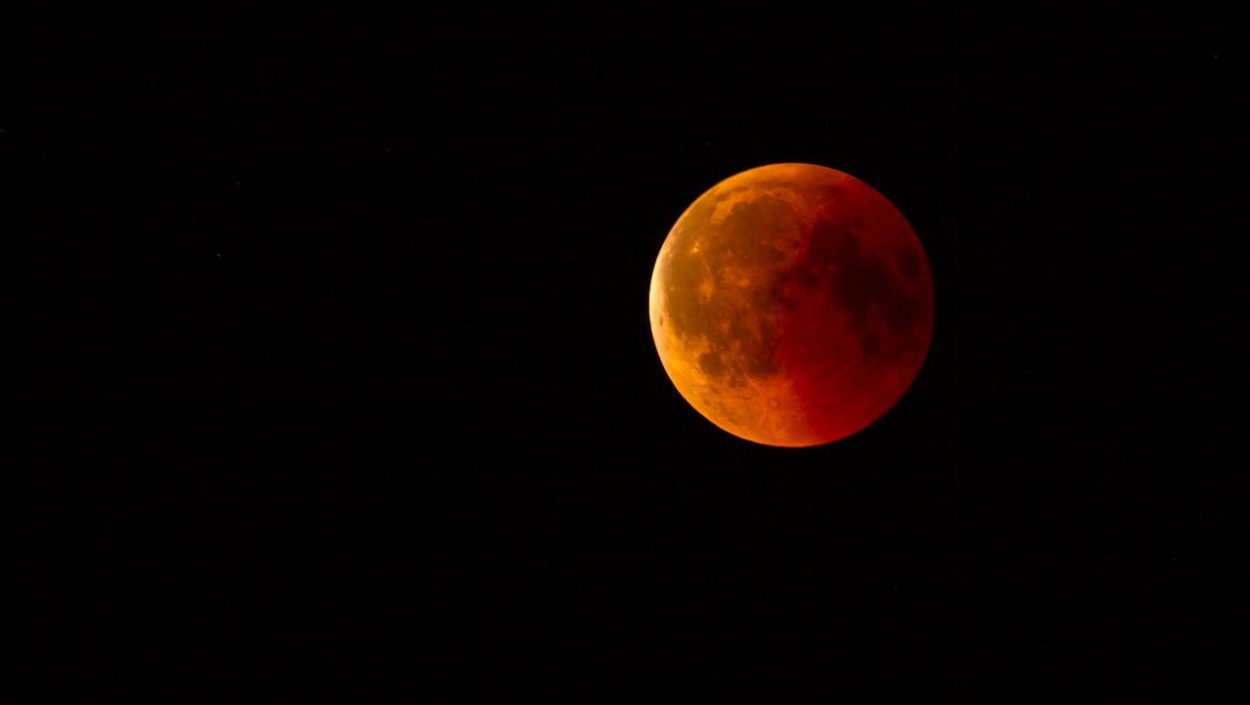The Earth Observatory Report the special observation that the Thermal Infrared Sensor (TIRS) on the Landsat 8 and 9 satellites measured changes in lunar surface temperature during the eclipse.
The sensors of both satellites have approx. With a resolution of 60 kilometers, he made his recordings of the strength of infrared radiation emitted from the lunar surface during the 4-hour eclipse period. Based on these recordings, specialists were able to calculate the temperature of certain regions of the Moon, and from the data generated in this way, it turned out how the temperature of the Moon’s surface changed, as the Earth’s shadow passed over our celestial companion. . The lighter spots in the photos are hotter and the darker spots colder.
Thanks to the recordings, Dennis Reuter, the expert in charge of operating TIRS, has drawn attention to two interesting things. On the one hand, interesting is how quickly the surface of the Moon cools, once the Earth’s shadow is cast on it, that is, as soon as direct sunlight stops. “Temperatures dropped by more than 100 degrees Celsius per hour when the total eclipse began.” The grand total lasted from 03:29 to 04:53 UTC (this is also shown in the images).

Recordings of two Landsat satellites, dates are in UTC. Tycho Crater is the brightest spot on the moon because of its temperature.
Source: Earth Observatory
This rapid decline makes sense on the one hand, because the Moon does not have a heat-insulating atmosphere, but, as Reuter explained, the Moon’s surface also plays an important role in this. Over the course of billions of years, impact meteorites shattered most of the surface and turned into dust, and dust called regolith densely covers the moon today. “Because of the small size of the dust grains and the low density of the uncoordinated soil, it loses the absorbed heat very quickly.”
This then leads to another interesting point: craters cool more slowly than their surroundings, for example images clearly show that Tycho crater remains relatively warm (lighter in color) as the eclipse progresses. (Tycho is a crater located near the south pole of the Moon, which we all know so well, at least we didn’t know its name until now: confirmed by the very amazing radial ejections of material from the light-colored crater.) Before the eclipse, the crater was much cooler than its surroundings, but it has cooled more slowly than its surroundings, and by the time the crater is covered in complete shade, its temperature is already higher.

Tycho’s crater can be seen at the bottom, approximately in the middle, and it is very easy to identify it from the radial lines from which it begins.
Source: Pixabay
This is partly due to the fact that the soil of the pit is less finely ground than the soil around it, or it is made of materials that transfer heat better.
Similar measurements were used For example, in the asteroid Bennu: The OSIRIS-REx space probe observed the same regions in different illumination, and therefore it was possible to know from the data obtained that the structure of some rocks on the surface of the young planet is so loose that it can collapse by hand. It occurred to Reuter that similar measurements could now be made on the lunar surface, where the illumination would change very quickly. And if the measurement results also coincide with the knowledge of the material of the lunar rock samples, then it is possible to reveal the system of relationships that exists between the thermal inertia and the surface properties.

Landsat 9 satellite (fictional image)
Source: NASA
But how can the two Earth observation satellites look at the moon? The Landsat satellites are constantly turning all of their instruments toward our planet, but once a month they head toward the Moon for calibration purposes. On May 16, the two moons underwent the same procedure, as if they were preparing for calibration, and so they saw a lunar eclipse. For the operation, the USGS, which operates the satellites, and NASA jointly planned its phases, tested in the simulator whether the maneuvers would jeopardize Earth observation data, and then sent the command to the satellites in time.






